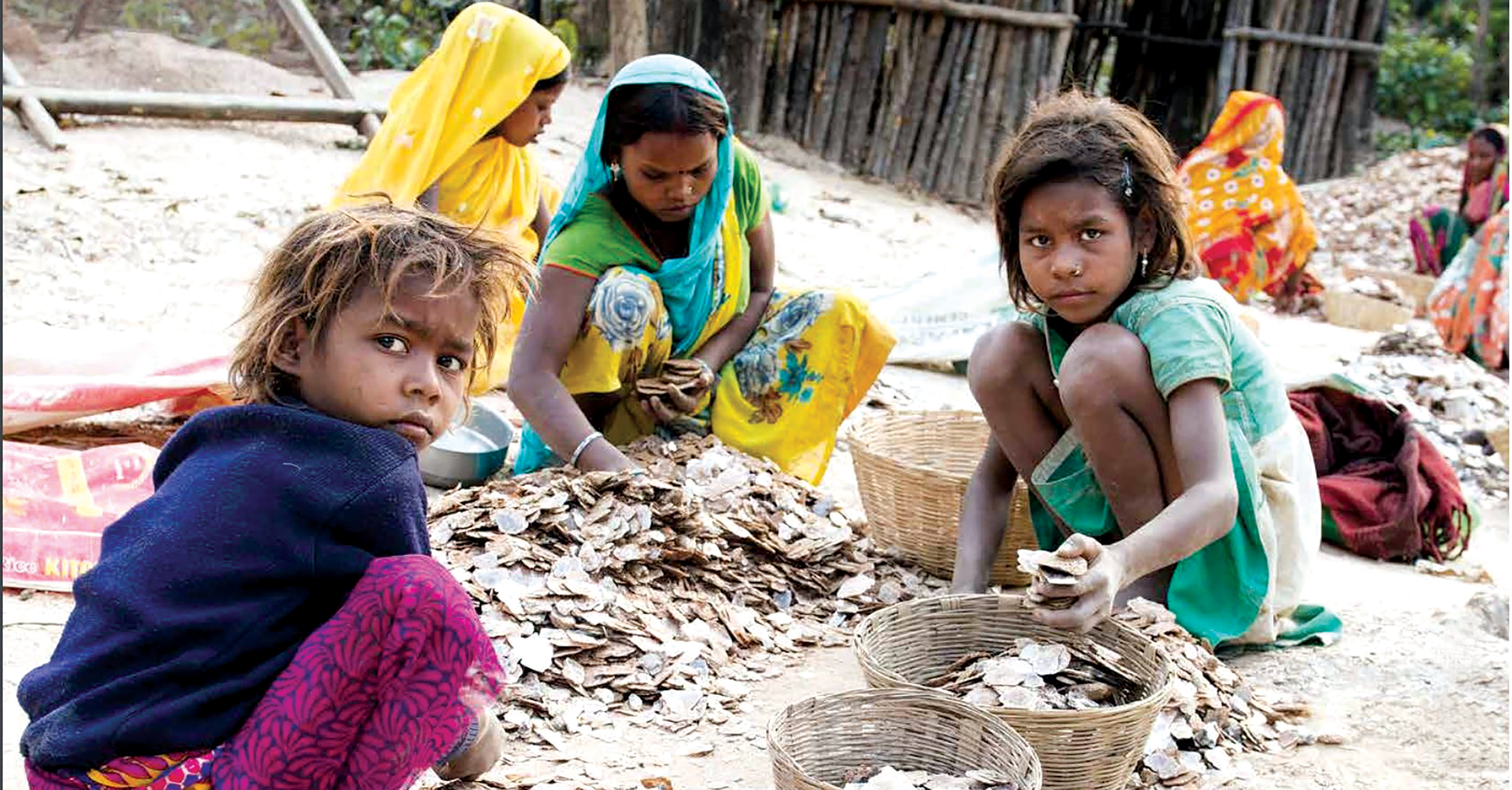
While the world is gripped by consumerism, there is little to no awareness in regard to the source of products we bring home every fortnight. Plastic being a major problem is known, but our actions to reduce its use is not enough. The reality is though, that no product we consume is devoid of an ethical or environmental loophole.
For the longest, makeup was thought to be cruelty-free if it was not tested on animals. However, among the multitudes of departments and supplier chains, it is difficult to know which part of its course is being exploited. As we still struggle to save animals from any harm done by the beauty industry, a March 2018 report by Terre des Hommes, a Swiss non-governmental organization has estimated 22,000 children (years after the issue was first brought to light) work in the Indian states of Jharkhand and Bihar, mining for Mica — a mineral found in majority of makeup products utilised around the world.
The word mica, which means to shine, flash, or glitter refers to a group of 37 crystalline minerals that have dozens of industrial applications used to add a shimmer to everything from car paints to cosmetics such as blusher, eye shadow, lipstick and foundation. Leading cosmetics companies including L’Oréal and Estée Lauder, source mica from India, where about 60% of the world’s supply is extracted.
As we watch Kylie Jenner and Kim Kardashian make their cosmetic brands a billion-dollar company, run entirely through social media, there is nothing about it that sensitises users about where the shine on their faces comes from. Instead, we watch a generation of millennials teach tricks on Instagram and YouTube on how to use the latest products to their few thousand followers or an Anusha Dandekar trying her luck with her newly launched beauty brand, CGG (Clean Green and Gorgeous).
Poverty is a crucial factor which makes children vulnerable to child labour —according to 2013 data, 36.9% of the population in Jharkhand and 33.7% in Bihar live below the poverty line. Families rely on children to supplement the household income, and with little other opportunities, they work in the mines. As many as seven deaths of children in mica mines, in just two months, were found in a 2016 report.
Mica gets unearthed in China, Russia, Finland, the US and Canada, but the cosmetics industry irrepressibly sources its supply from India, where it’s often mined by children as young as four or five years old. This has received mainstream attention only in the past few years, that too mostly in Europe. But despite growing media attention, there is not much reportage done to educate Indian consumers about the makeup that they use and its relation to child labour. This is significant, because of the sheer scale of the Indian beauty industry which will be worth $20 billion by 2025.
L’Oréal, that is aiming for a $1 billion revenue target in India by 2020 implements a sustainable procurement policy in India. This it does by limiting the number of suppliers, and sourcing from legal gated mines only, where working conditions can be closely monitored and human rights respected.
But there are many products out there which we don’t know the source of. Shereenlovebug, an Instagram page goes by all things beauty and fashion. While Shereen has about half a million views of her video tutorials, there is not a single mention of the safety ensured in the making of the products she endorses.
A lot of us watch Jeffree Star, Nikkie Tutorials, Dulce Candy and Huda Beauty, which show people the best way to apply certain products; this Nihal Kaur, a Chandigarh based student who is not an avid makeup user finds harrowing. “All there is on Instagram is people showing us how to put makeup.”
Shreya Khurana, a Delhi based fashion designer, feels differently. She calls herself a makeup hoarder who uses them only sometimes, but “I watch tutorial videos sometimes, for fun”. On being asked if she has come across a beauty blogger who has spoken about exploitation in the makeup business, she mentioned Jovita George, who she says talked about cruelty-free makeup in one of her videos. However, personally, she didn’t know about child labour being used to extract mica in India.
Some of the brands that are part of the Responsible Mica Initiative, are L’Oréal, Coty, Chanel, Merck, Oriflame, The Body Shop, Sephora, and LVMH. They work together towards implementing fair and sustainable mica collection, processing and sourcing practices, and improve traceability along the Indian mica supply chain. One can identify mica in makeup products that are often listed as ‘mica,’ ‘potassium aluminium silicate,’ and ‘CI 77019,’ on the ingredient lists.
Jatin Tiwari, a management student who recently moved to Canada uses makeup as it makes him feel more confident. “I only use foundation and rarely concealers. To glam it up, perhaps a touch of highlighter while hitting clubs.” According to him, people are more aware in Canada than in India. “We need to see logos like fair trade and sustainable production on makeup to be able to make a choice as consumers.” He believes that nobody talks about these facts and audits need to be placed to ensure safety, especially for children.
Delhi Fire Service has initiated comprehensive fire safety inspection drive in restaurants, hotels and clubs…
Out of 40 air quality monitoring stations across the city, 14 recorded severe air quality…
Govt, however, acknowledged that air pollution is one of the triggering factors for respiratory ailments…
Rising air pollution levels in the capital, the Delhi government on Thursday undertook a comprehensive…
Parents say online classes during severe air pollution ignore the digital realities of economically weaker…
Rival leagues trigger players’ suspensions and a legal battle in Indian golf, for now